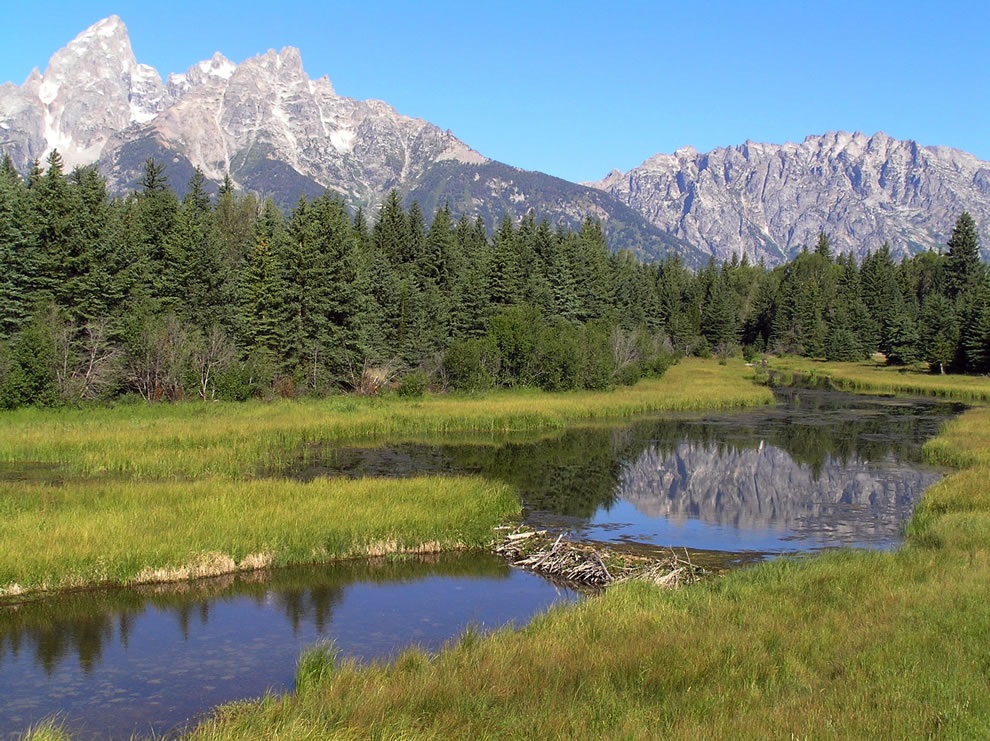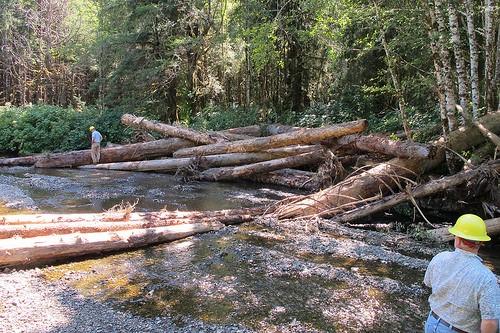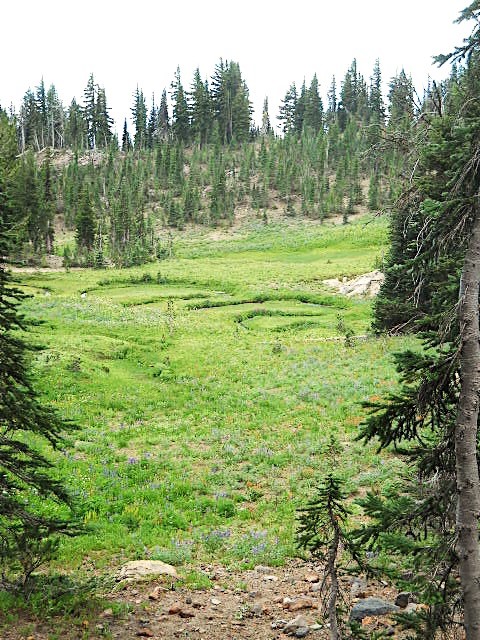Sensitivity
A. Reduced snowpack, shifts in hydrologic regime involving changes in timing and magnitude of streamflows, and changing groundwater recharge and discharge will likely lead to shifts in plant species composition and reduced habitat quality in riparian areas, wetlands, and groundwater-dependent ecosystems.
A. Sensitivity: Reduced snowpack, shifts in hydrologic regime involving changes in timing and magnitude of streamflows, and changing groundwater recharge and discharge will likely lead to shifts in plant species composition and reduced habitat quality in riparian areas, wetlands, and groundwater-dependent ecosystems.
Explanation
Anticipated changes include lower summer flows (Stewart et al. 2005, Luce and Holden 2009, Safeeq et al. 2013), higher and more variable winter flows (Hamlet and Lettenmaier 2007, Hamlet et al. 2013), and potential shifts in vegetation composition and abundance (Dwire and Mellmann-Brown 2017).
Practices
Maintain and promote riparian processes and functions
- Manage upland vegetation to reduce risk from large-scale, high-severity fire in riparian areas (e.g., with thinning and prescribed fire)
- Restore riparian obligate species
- Promote appropriate livestock grazing management and proper use standards
- Reconnect floodplains and side channels to improve hyporheic and baseflow conditions
- Manage for highly functioning riparian areas that can mitigate high flows
Implement management strategies that retain soil moisture in riparian areas, wetlands, and GDEs
- Maintain and improve soil function and health
- Improve stream channel function
- Manage upland forest vegetation
Increase floodplain and channel water storage by managing for American beaver populations
- Plant shrubs in riparian areas for beaver use
- Trap and relocate beavers to selected watersheds; use valley form analysis to assess potential sites for beaver colonies and channel migrations
- Consider beaver dam analogues to improve habitat quality for beaver
- Work with appropriate agencies to reduce trapping rates in vulnerable watersheds
- If populations are low in a watershed, trap and relocate beavers to create dams
Plan and prepare for more frequent and severe flood events
- Restore native plant species in riparian areas
- Control invasive plant species in flood-prone reaches
- Expand current restoration projects to mitigate increasing flood risk
- Avoid committing resources for restoration projects in areas with high flood risk; prioritize areas with low flood risk
- Use natural flood protection (e.g., vegetation or engineered logjams)
- Refine and revise stream health protocol to integrate flow regime change
Maintain or restore natural flow regime to buffer against future changes
- Protect groundwater and springs
- Address water loss at water diversions and ditches
- Consider float valves for watering troughs and disconnect diversions during off seasons
- Reconnect and increase off-channel habitat and refugia in side channels and channels supported by wetlands
- Revegetate and use fencing to exclude livestock
- Acquire water rights where possible
- Disconnect roads from streams to reduce drainage efficiency
Increase floodplain water storage
- Plant appropriate trees and shrubs in riparian areas
- Maintain or restore channel form
- Manage to adjust livestock season of use, use numbers, and duration of use
- Manage to adjust recreation season of use, use numbers, and duration of use
Conduct education and outreach with involved parties to promote riparian and wetland function
- Collaborate with watershed councils
- Collaborate with recreation specialists and managers
- Increase communication networks for safety and awareness
Maintain resilience of high-elevation wetlands
- Monitor functionality of existing wetlands
- Reduce direct human impact on sensitive wetland habitats
- Monitor changes in plant distribution, especially invasive species
- Address water loss at water diversions and ditches
Monitor and prioritize regions for wetlands management
- Prioritize habitats for active management and protection across jurisdictional boundaries

- Focus monitoring on sensitive habitats and species in priority regions
- Periodically review and revise management priorities
Increase riparian and wetland plant population resilience by reducing non-climatic threats
- Manage road, trail, and recreation impacts
- Maintain hydrology of critical habitats
- Increase habitat connectivity and heterogeneity
- Mitigate road impacts; eliminate unnecessary roads and impacts to wetlands and riparian areas
- Redesign road drainage to reduce runoff and increase water infiltration and retention
- Control invasive species; use early detection, rapid response (EDRR)
Manage water to maintain springs and wetlands; improve soil quality and stability
- Monitor recreation usage in/near springs and wetlands and manage impacts
- Reduce ungulate trampling in/near springs and wetlands with fencing and livestock use changes; place watering troughs outside riparian/wetland zones
- Maintain water on-site through water conservation techniques such as float valves, diversion valves, and hose pumps
- Encourage spring development project designs that will ensure water flows for native species and habitat
- Develop a national groundwater protection program
Introduction Hydrology, Water Uses, and Infrastructure Forest Vegetation Non-Forest Vegetation
Riparian Areas, Wetlands, and Groundwater-Dependent Ecosystems Fish Habitat and Fisheries Wildlife Recreation References
Climate Risk Management Practices prepared by: J.J. Ho; J.E. Halofsky; D.L. Peterson

